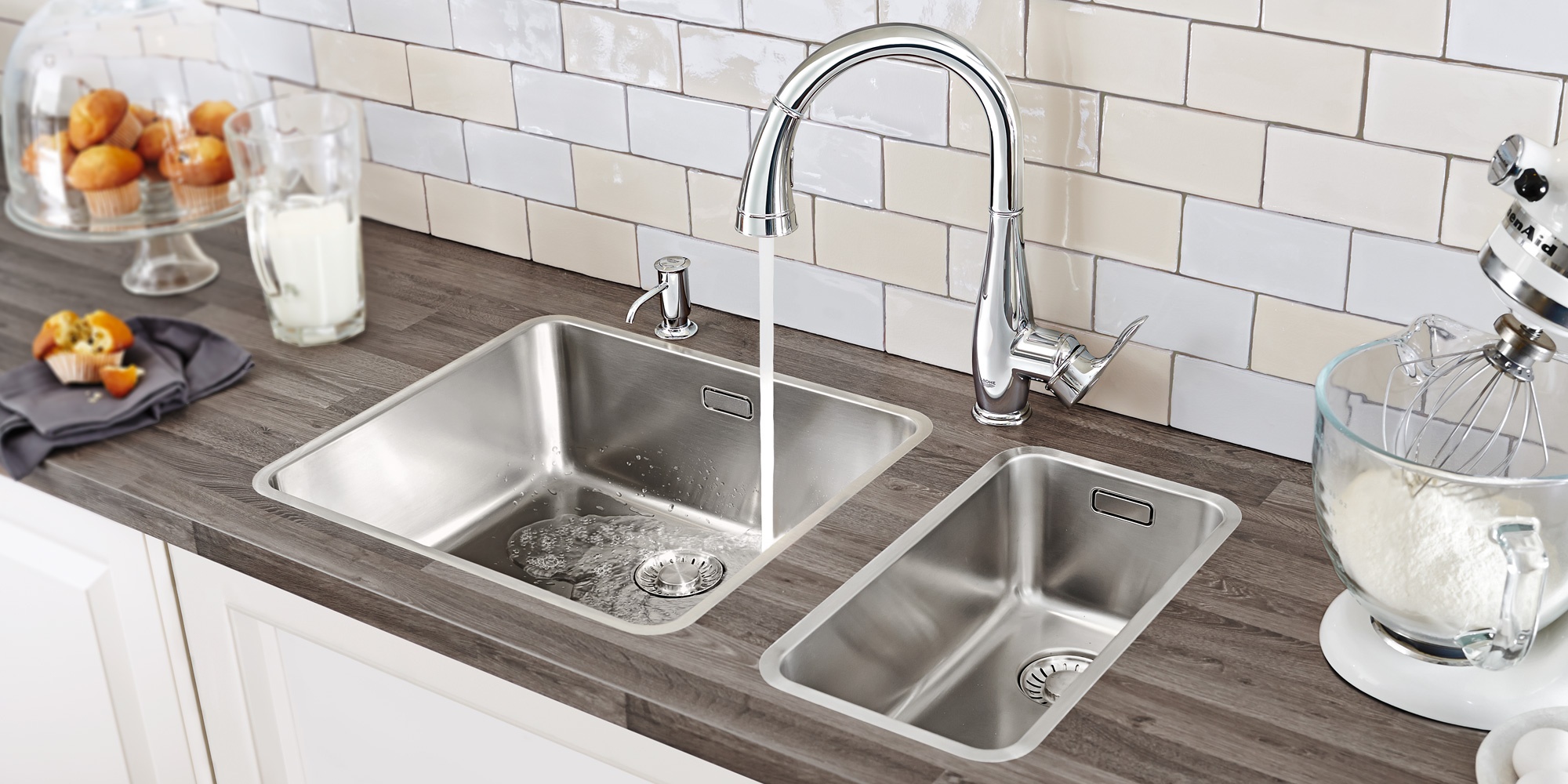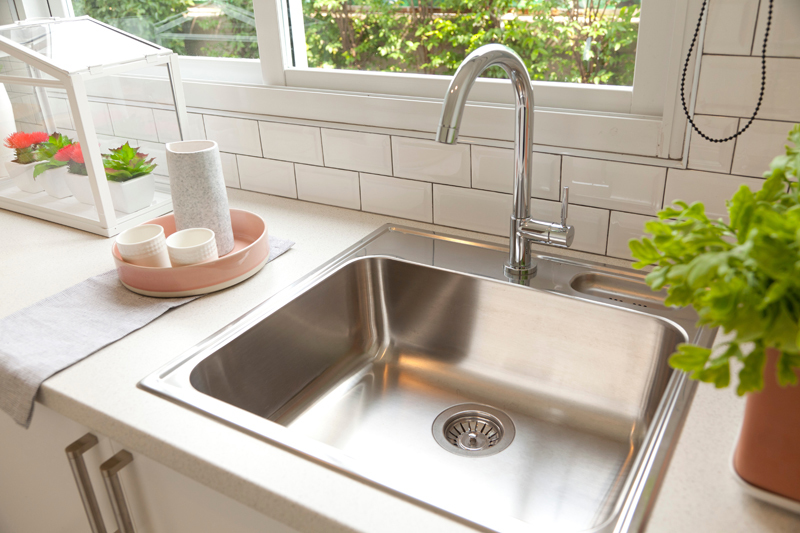Sink Elegance: Where Functionality Meets Design in the Heart of Your Home.
Explore the evolution of sinks from basic utilities to design statements, encompassing their historical journey, diverse designs, technological innovations, and societal impact. From ancient stone basins to contemporary smart fixtures, sinks have become integral to hygiene, efficiency, and aesthetic expression in kitchens, bathrooms, and public spaces.
Sink Evolution: From Utility to Design Innovation in Homes and Beyond.

The sink, a seemingly mundane fixture in our daily lives, serves as a cornerstone of functionality and hygiene in both residential and commercial spaces. Its evolution from a simple utility to a design element reflects not only technological advancements but also societal shifts in our approach to cleanliness and efficiency. In this exploration, we will delve into the multifaceted nature of sinks, examining their historical development, diverse designs, technological innovations, and the crucial role they play in maintaining cleanliness and convenience in various settings.
Historical Development:
The concept of a sink traces its roots back to ancient civilizations where rudimentary forms were carved from stone or fashioned from clay. However, it was the Roman Empire that made significant strides in plumbing, introducing early versions of indoor plumbing systems that included basic drainage channels and rudimentary sinks. These early sinks were utilitarian, fulfilling the primary function of providing a designated space for washing hands and utensils.
As time progressed, the Renaissance period saw a renewed interest in hygiene and cleanliness, leading to innovations in plumbing and the refinement of sink designs. The 19th century marked a pivotal moment with the advent of the modern plumbing system, transforming the sink from a basic necessity to an integral part of residential and commercial architecture.

Design Evolution:
The evolution of sink design mirrors the broader evolution of architectural and interior design trends. From the ornate porcelain basins of the Victorian era to the sleek and minimalist designs of the 21st century, sinks have become not only functional but also aesthetic focal points in kitchens, bathrooms, and other spaces.
- Materials and Aesthetics:
- Early sinks were primarily made of stone or metal. The Victorian era saw the rise of porcelain sinks with intricate designs, while the mid-20th century embraced stainless steel for its durability and modern aesthetic.
- Contemporary sinks come in a variety of materials, including granite, glass, copper, and composite materials, allowing for diverse design choices that complement different architectural styles.
- Styles and Configurations:
- Over the years, sink styles have diversified to cater to various needs. Farmhouse sinks, with their deep basin and apron front, evoke a rustic charm, while undermount sinks provide a seamless, modern look.
- Configuration options range from single-basin sinks to double-basin sinks and even triple-basin sinks, offering flexibility for different kitchen and bathroom layouts.
- Smart and Innovative Designs:
- In recent years, the integration of smart technology has found its way into sink design. Touchless faucets, integrated soap dispensers, and sinks with built-in water filtration systems showcase the fusion of functionality and innovation.
Technological Advancements:
The integration of technology has significantly enhanced the functionality and efficiency of sinks. These advancements extend beyond aesthetics to address water conservation, hygiene, and user convenience.
- Touchless Faucets:
- Touchless faucets, equipped with infrared sensors, have gained popularity in both residential and commercial settings. These faucets not only reduce the spread of germs but also contribute to water conservation by allowing users to control water flow with hand gestures.
- Water-saving Technologies:
- Eco-friendly features such as low-flow aerators and water-efficient designs contribute to sustainability efforts. These technologies aim to reduce water consumption without compromising on the performance of the sink.
- Hygienic Surfaces:
- Antimicrobial materials and finishes have become common in sink design, promoting hygiene by inhibiting the growth of bacteria and microbes. This is particularly crucial in healthcare settings and places where maintaining cleanliness is paramount.
Crucial Role in Daily Life:
The sink's significance in our daily lives extends far beyond its utilitarian function. It serves as a hub for personal hygiene, dishwashing, food preparation, and more. In the kitchen, the sink is a central component of the work triangle, influencing the efficiency of meal preparation. In bathrooms, sinks contribute to the overall design aesthetic while providing a space for personal grooming and hygiene practices.
- Kitchen Hub:
- In the kitchen, the sink is a dynamic space where dishes are washed, food is prepared, and fresh produce is cleaned. The choice of sink and its placement can greatly impact the workflow and functionality of the kitchen.
- Bathroom Oasis:
- In bathrooms, sinks have evolved from basic fixtures to design statements. Vessel sinks, pedestal sinks, and countertop sinks contribute to the overall ambiance, turning the bathroom into a space of relaxation and rejuvenation.
- Meeting Hygiene Standards:
- Sinks play a crucial role in meeting hygiene standards, particularly in healthcare facilities, restaurants, and other public spaces. Proper handwashing, facilitated by well-designed sinks, is a fundamental practice in preventing the spread of infections.

Frequently Asked Questions
Full Meaning of Sink: The term "sink" has multiple meanings depending on the context. In the context of a fixture, like a kitchen or bathroom sink, it refers to a basin with a water drain used for washing, especially dishes or personal hygiene. In a broader sense, "sink" can also mean to descend or go down, as in sinking beneath the surface of water or descending to a lower level.
Synonym for the Word Sink: A synonym for the word "sink" is "basin." In the context of descending or going down, synonyms include "descend," "submerge," or "plunge."
Meaning of "Sink Life": The term "sink life" is not a commonly recognized phrase. However, if used in a specific context, it could be interpreted as a way of expressing a lifestyle or situation that feels heavy, burdensome, or challenging, akin to the feeling of sinking or descending.
Type of Verb "Sink": "Sink" can function as both a transitive and intransitive verb. As a transitive verb, it takes a direct object, as in "to sink a ship." As an intransitive verb, it doesn't require a direct object, as in "the boat began to sink."
Kitchen Sink: A kitchen sink refers to a fixture in the kitchen used for washing dishes, hands, and food preparation. It typically consists of a basin with a faucet for water supply and a drain for wastewater.
Sink Price in Nigeria: The price of a sink in Nigeria can vary depending on factors such as brand, material, design, and size. For specific pricing information, it is advisable to check with local suppliers, home improvement stores, or online retailers.
Sink Meaning in Hindi: The Hindi equivalent for "sink" is "वाशिंग सिंक" (Vashing Sink) when referring to a kitchen or bathroom sink. The verb "to sink" can be translated as "डूबना" (Doobna).
Sink Meaning in Urdu: In Urdu, "sink" can be translated as "سنک" (Sink) when referring to a basin or fixture for washing. The verb "to sink" can be translated as "ڈوبنا" (Doobna).
Bathroom Sink: Similar to a kitchen sink, a bathroom sink is a fixture used for washing hands and face, brushing teeth, and other personal hygiene activities. It is typically smaller than a kitchen sink and is an essential component of bathroom design.
Sink Price: The price of a sink can vary widely based on factors like material, brand, design, and features. To determine the specific cost, it's recommended to check with retailers, both online and in physical stores.
Sink Synonym: A synonym for "sink" is "basin." In the context of descending or going down, synonyms include "descend," "submerge," or "plunge."
Sink Meaning in Biology: In biology, the term "sink" is used metaphorically to describe a location or process that absorbs or utilizes a particular substance, often in the context of nutrient absorption or carbon sequestration. For example, in plant biology, a "sink" can refer to a tissue or organ that stores or utilizes nutrients.
Cultural and Societal Impact:
Beyond its functional attributes, the sink holds cultural and societal significance. It reflects changing societal norms around cleanliness, convenience, and the role of technology in daily life.
- Cultural Practices:
- Different cultures have unique approaches to sink usage. For example, in some cultures, the kitchen sink is a communal space for food preparation and family interaction, while in others, it is a more private area reserved for specific tasks.
- Societal Shifts in Hygiene:
- The emphasis on hygiene has grown exponentially, influencing sink design to incorporate features that promote cleanliness and reduce the risk of contamination. This is particularly evident in public spaces where touchless technology and antimicrobial surfaces have become standard.
- Design as a Reflection of Lifestyle:
- The design of sinks in modern homes often reflects a lifestyle centered around efficiency and aesthetics. Open-concept living spaces, where kitchens seamlessly integrate with other areas, have influenced the design of sinks to be visually appealing and functional. the sink, a seemingly humble fixture, has evolved into a multifaceted element that goes beyond its utilitarian roots. Its journey from ancient stone basins to sleek, technologically advanced fixtures mirrors the progress of civilization and the changing priorities of society. From a practical standpoint, the sink remains a vital component of daily life, facilitating hygiene, food preparation, and overall well-being. Simultaneously, its design has become a canvas for artistic expression and a reflection of our cultural values and technological progress. In essence, the sink embodies the intersection of form and function, weaving itself into the fabric of our homes and daily routines in ways both subtle and profound.



